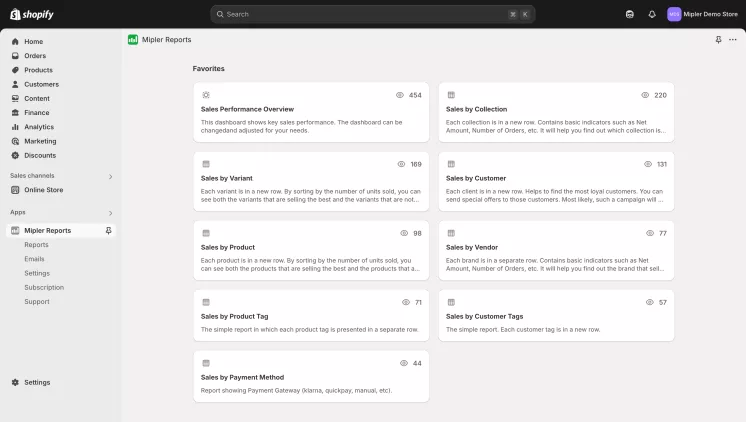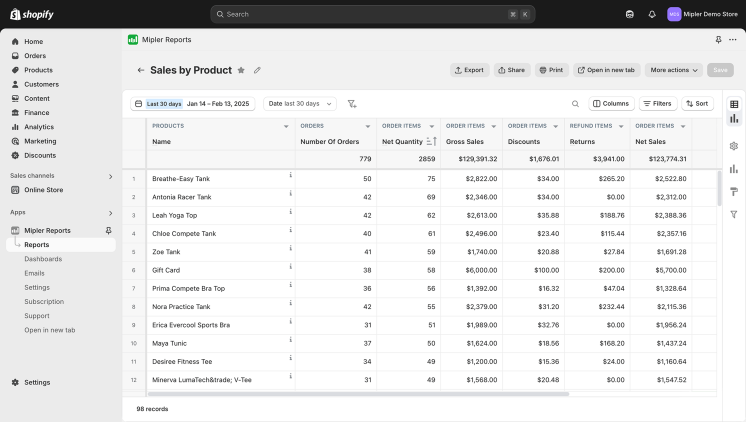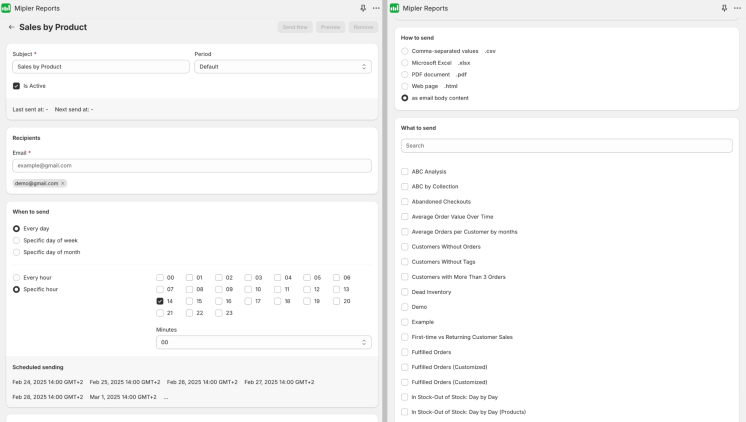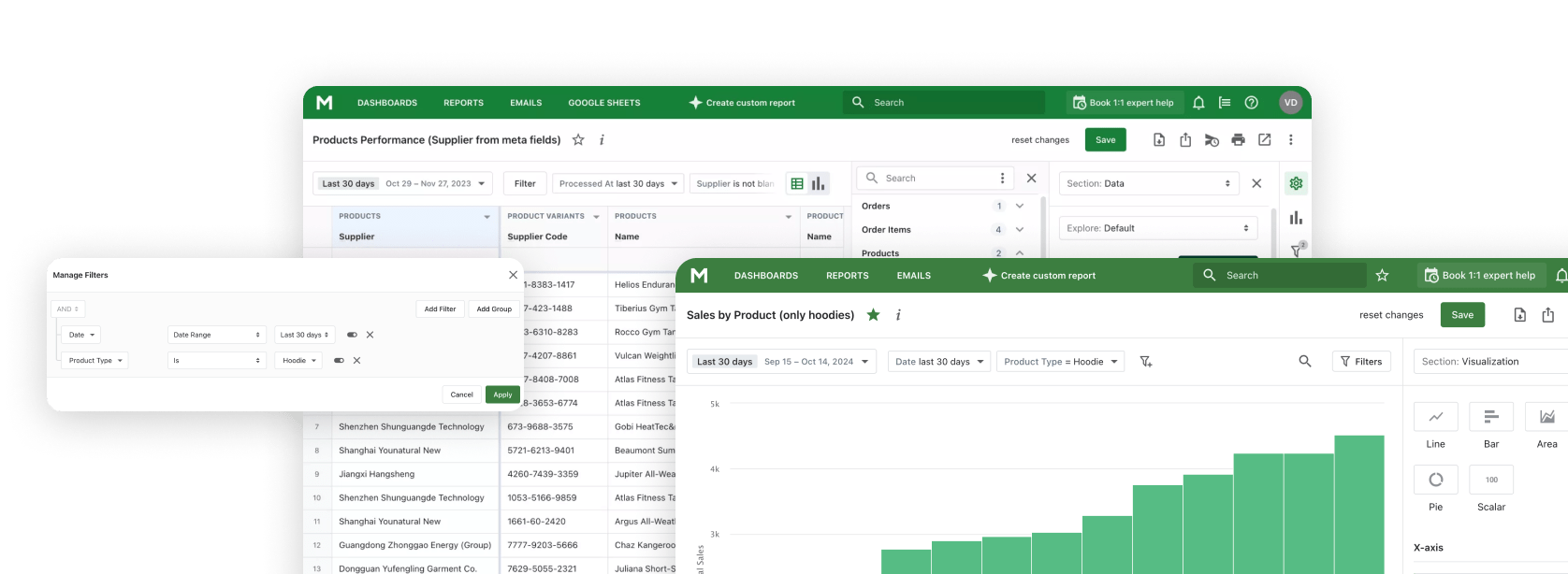Why Shopify Catalog Reports Are Important
Owners of Shopify stores have to manage extensive data collections, which include product listings together with customer transaction records. The Shopify Reports work as a data management system that gives insights about product performance with stock status and market trends. The lack of knowledge in reporting systems leads to complex operational issues that can affect sales processes and inventory management.

Benefits of Shopify Catalog Reporting
-
Improved Inventory Management
Real-time inventory tracking prevents supply loss and shows you all information which your business needs.
-
Inventory Analytics
The system provides data about which products achieve the most high sales volumes and which remain unpopulated and need removal.
-
Automated Reporting
The system provides automatic catalog reports for dynamic updates of information and to schedule your reports.
-
Customization & Filtering
The reporting system must function by categories together with vendors and pricing requirements to meet business requirements.
How Shopify Catalog Reporting Helps You
Shopify Reporting Catalog gain valuable benefits from their use of catalog reports such as:
- Identifying popular selling products by predicting user patterns from sales data.
- Reporting with low-stock notifications to help businesses maintain a regular inventory supply.
- Monitoring the effect of changing prices on your sales performance.
- Comparing historical trends in product performance.

Create Shopify Catalog Reports with Mipler
Mipler provides users with a simplified method to make catalog reports. Shopify store owners can extract useful data through its helpful interface and customization options.
Steps to create a Shopify Catalog Report with Mipler:
-
Select the Report Type
Choose from a list of pre-built catalog reports, or create a custom one.
-
Apply Filters
Analyze data based on clear data from stock levels, product categories or pricing strategies.
-
Schedule Automated Reports
Set up scheduled reports for regular use to reduce time and gain more profit.
-
Export & Share
Download reports in multiple ways and share them with your team.
Build and Automate Your Shopify Catalog Reports to Optimize Your Store
A maximum impact of efficiency can be achieved by Shopify merchants who use automation processes for their reporting catalog systems. The automated report system reduces manual work while achieving bigger results, which send instant updates automatically.
Best Practices for Automating Catalog Reports:
- Stock levels should be monitored through regular updates which run each day or week.
- Reports need to integrate with inventory management systems for optimal operational efficiency.
- Use visual dashboards to allow monitoring key performance indicators known as KPIs.

Important
Implementing Shopify catalog reports gives information about inventory and sales statistics.
Mipler enables businesses to use data in a more easy way to achieve their goals.
The process of automated report catalog generation leads to improved accuracy with a higher efficiency rate.
FAQ
What is a Shopify catalog report?
A Shopify catalog report provides a structured inventory overview of products, stock levels and performance statistics to help owners manage their inventory.
How do Shopify catalog reports improve inventory management?
The reports provide real-time updates about inventory levels, which helps merchants avoid stockout situations and product overselling.
Can I automate catalog reports in Shopify?
Mipler allows users to automate report scheduling using Shopify Sales Reports, so their data remains current without any human interaction.
What’s the best way to customize catalog reports?
The reports allow you to select information according to product type, vendor, price range and sales trend data so you can obtain specific business insights.
